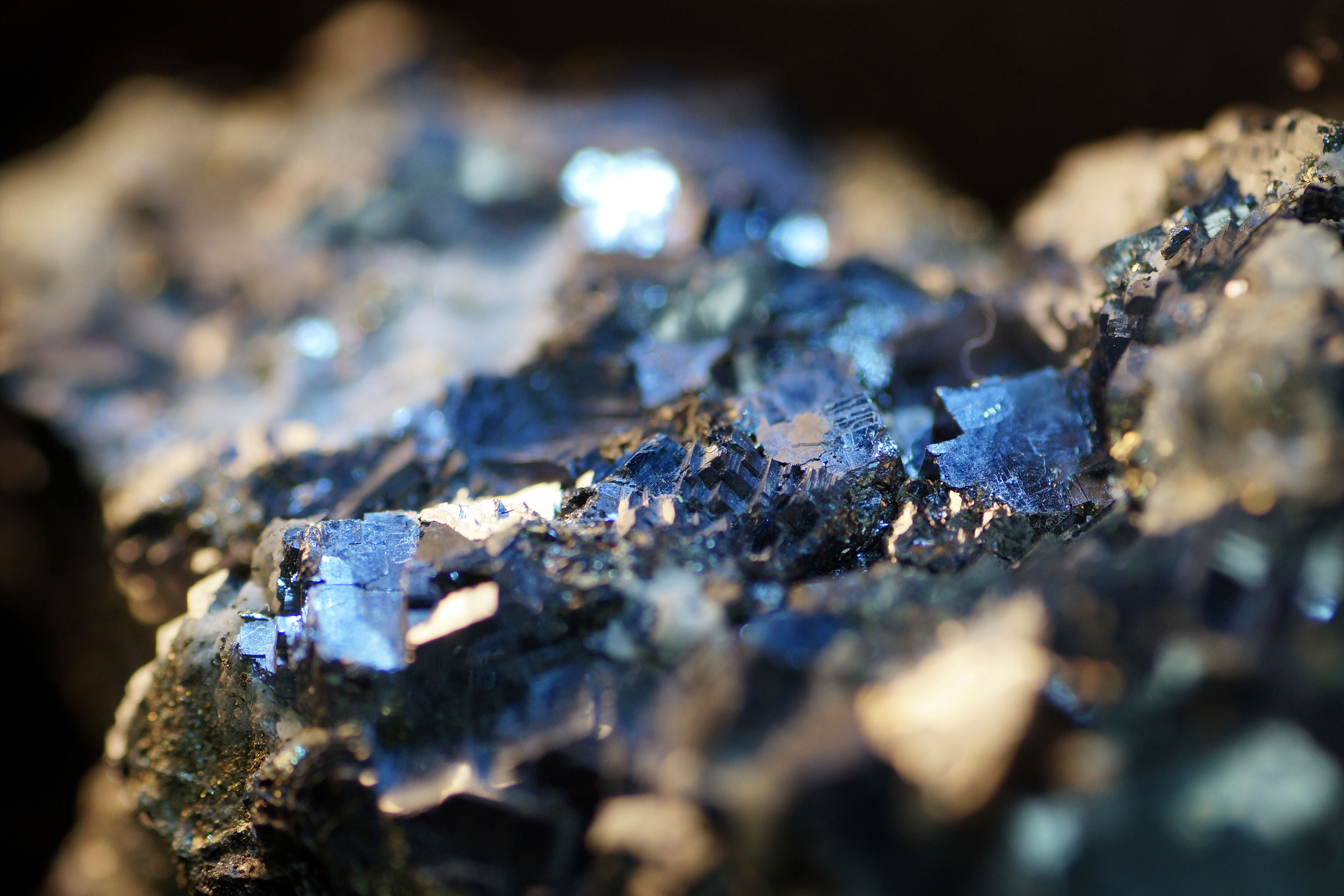EY refers to the global organization, and may refer to one or more, of the member firms of Ernst & Young Global Limited, each of which is a separate legal entity. Ernst & Young Global Limited, a UK company limited by guarantee, does not provide services to clients.

The future of the commodities cycle depends on how the macroeconomic environment pans out over the next year or so.
In Brief
- Is the current commodity short-term uptrend expected to be a supercycle or only a blip?
- What are the major themes for the current commodity upswing, and what will the impact be on commodities?
- What factors make us wary about the current upswing to be regarded as a supercycle?
- How can mining companies navigate the volatile environment and capture value?
Commodities prices have exploded over the last two years, with prices of some even touching multi-year highs. The trajectory of the price increase and its sustenance at higher levels is astonishing and is forcing us to investigate whether it’s the start of a commodities supercycle or whether it’s the supply-side constraint.
The S&P Goldman Sachs Commodity Index (GSCI) data, which tracks commodities across five sectors — energy, industrial metals, precious metals, agriculture and livestock — is a major indicator of the performance of the global commodities market. As of March 30, 2022, the S&P GSCI reached an all-time high of 751 during the recent geopolitical crisis — 136% higher than the lows of 319 attained when the pandemic was declared on March 10, 2020¹ . Though the prices have corrected, they’re still trending much higher than the historical average.
The current upswing in the potential supercycle exhibits various drivers, such as high fiscal spending to support the economies, reconstruction of new growth and a resurgence of demand for commodities — all of which remain consistent with past supercycles.
There have been four recorded instances of sustained periods of demand:²
- The first commodities upswing started in the late 1890s and peaked around World War I.
- The second upswing started in the 1930s after the Great Depression kicked in and peaked in the early post-World War II years.
- The early 1970s witnessed the third cycle, which saw a weak upward phase followed by a strong downward one.
- The most recent upcycle started in 2000, with the rapid industrialization of China and peaked in 2008 when the global financial crisis halted demand.
The common theme across all the supercycles is the fact that the shortage in supplies results in commodity prices increasing, leading to commodity producers increasing their production capacities.
Based on historical supercycle data, a price upswing of 5 to 17 years was observed, with prices peaking from 10% to 33% above the average trend line. The downswings lasted between 14 and 28 years, with prices reaching as low as 38% below the average.
Themes playing out
Major themes — such as the emphasis on the structural shift to energy transition, high fiscal spending, increasing inflation and geopolitics — are some of the driving forces for the current commodity upswing. Metals are likely to outperform during the up leg of this supercycle as countries strive to achieve the Paris Agreement targets, with momentum for green metals likely to gather steam.
Even though commodities have risen sharply and have many drivers from previous supercycles, there are a few factors that make us cautious about the current upswing to qualify as a supercycle:
China commodity intensity may have plateaued
- The commodity intensity shown in the last supercycle to develop China’s economy, such as the Chinese stimulus to drive growth for different commodities, is likely to be much lower this time around, since China already has some of the highest per capita consumption of various industrial commodities.
- Moreover, China has shifted its focus from a production-led economy to a consumption-led economy, which is likely to reduce overall metal consumption.
Financialization of commodities
- Commodity derivatives markets evolved very strongly after the last supercycle, influencing the real discovery of commodity prices.
- Future/derivative positions in most commodities are multiple times the actual physical delivery, leading to huge volatility and abrupt movements. Commodity prices have moved away from traditional demand-supply dynamics. For instance, nickel trading was suspended from London Metal Exchange (LME) on March 7 as prices spiked above 250% in 24 hours after a Chinese investor failed to pay margin calls against a large short position accumulated through its forward contracts. ⁶
- The financialization of commodities induces skepticism to justify labelling only the price movement as a supercycle.
Macroeconomics
- Inflation has already reached record levels in the first two years of the current upcycle. Central banks across countries have set rates very aggressively to tackle inflation, which will come at the cost of global growth and recovery.
- Ongoing US Fed interest rate hikes, geopolitical risks and concerns over the new wave of COVID-19 pushed the US dollar index to an all-time high of 105 on May 13, 2022, thereby negatively impacting commodity prices.⁷Most metals have corrected 15%-40% from recent highs. Though the correction could be temporary, the sheer velocity indicates that prices may have peaked out for the cycle.
- Record-breaking debt levels and unemployment could provide a headwind for sustained economic growth.
Unintended consequences of commodity supercycles
Typically in a supercycle, there are some unintended consequences. These side effects arise due to the various factors playing out in the micro and macro environments. We are already witnessing some of these consequences in the last year. The intensity of these unintended consequences will decide the future of the current cycle.
Calls for action
Hedging
Commodities, including metals, have typically tended to be effective during supercycles, offering a hedge against inflation and disruption. Hedging is therefore viewed as a viable strategy to lock in trading prices irrespective of whether the commodity is in a supercycle or not. Considering the price volatility of the past few months, companies should have a prudent hedging strategy so miners and consumers can safeguard themselves. For instance, as of April 2022, 31 Chinese mining and metals companies had released hedging strategies, 14.8% higher than the same period in 2021.¹¹
Revisit the capex program
There has been a change in the economic scenario, especially in the last few months, with the economic slowdown kicking in. Those companies that are aggressively building their portfolios without factoring in the slowdown must revisit their capex plans in the current scenario of rising interest rates.
Companies may need to slow down their capital spending depending on how demand shapes up. For instance, in its Q1 earnings call, Kinross Gold lowered its capex forecast to US$850m from US$939m for 2022.12
Take a cautious approach
Miners need to exercise caution, since every supercycle gives rise to a new basket of commodities that experience an upswing in a particular phase. Though there is an uptick in most commodities, miners should be cautious of certain commodities that may structurally go down, particularly fossil fuels such as coal.
The current commodity boom is focused on energy transition metals, including aluminium, copper, cobalt and lithium, particularly as renewables and electric vehicles are at the forefront of driving consumption. However, their proportionate share in overall consumption may remain low considering there may be a structural slowdown impacting infrastructure projects globally.
In the short to medium term, we see supply-demand shifting towards supply on an overall basis. A prudent approach would be to survive during downturns by keeping the prices below the industry average and increasing production to cash in during upturns.
Think long term by integrating scenario planning
- Due to the cyclical nature of the mining industry, miners should factor in a long-term planning outlook, thinking beyond the upswing and downswing of the supercycle and focusing on long-term assets that bring value.
- Companies should integrate detailed long-term scenario planning to consider different geopolitical situations and price volatility to improve preparedness to operate under volatile short-term events.
Consider sharing infrastructure
Typically, the mining industry lags other sectors, such as oil and gas, in terms of shared infrastructure. Miners should consider sharing infrastructure or joint ventures to reduce risk and improve capital efficiency, particularly during a supercycle. Railway lines, shipping lines, roads, pit-to-port linkages, concentrators, transmission lines, tailing facilities and desalination plants are a few areas where companies could reduce financial risk and environmental footprints by sharing infrastructure.
Summary
Though the current upswing observed in the mining and metals sector exhibits some similarities to previous supercycles, it has structurally different catalysts. There are reasons to be skeptical about its sustainability. The recent correction in commodity prices and the aggressive stance to reduce inflation make us wary that this cycle may defuse sooner than expected.
Ultimately, the future of the commodities cycle depends on how the macroeconomic environment pans out over the next year or so. In case inflation persists and economic growth falters, we may have already seen the peak of this ongoing commodity cycle.
To ride out the downswing and capitalize on the upswing cycle, mining and metals companies should work towards including scenario planning, sharing infrastructure, taking a cautious approach, revisiting capex plans and hedging commodities.
How EY can help
Related article
Critical minerals supply and demand challenges mining companies face
An intense focus on reducing carbon emissions is driving increased electrification around the world. Read more.
Why digital transformation needs to be at the heart of any mining rebrand strategy
How considering digital transformation in rebranding will benefit the mining & metal industry in their search for talent.




